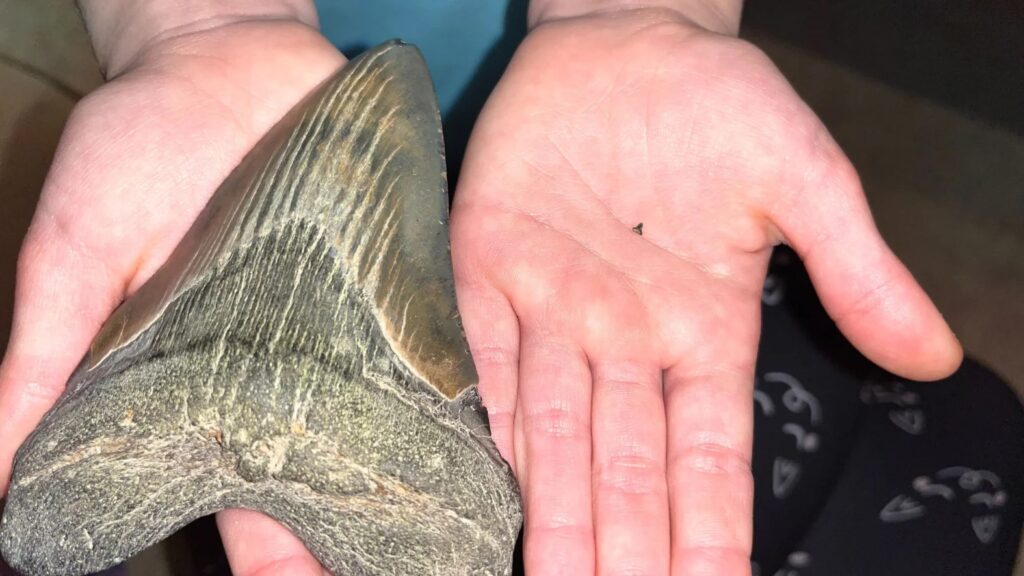Then They Realized It Wasn’t Just an Ordinary Object…

Finger-sized teeth are more common, but occasionally fossil hunters come upon evidence of the massive monsters that formerly roamed the ocean depths. The Megalodon is a once-in-a-lifetime discovery.
This now-extinct mackerel shark, whose name means “great teeth,” first existed between the 23 and 3.6 million-year-old Early Miocene and Pliocene periods.
Even though these horrible beasts are gone, their palm-sized fangs still make a rare appearance.
The teeth, which can reach lengths of several inches, are enough to terrify anyone who ventures deeper into the water.
Calvert Beach, in Maryland, is home to incredible fossils that look like they were plucked straight from the set of the “Jaws” film.
Molly Sampson, then nine years old, made a once-in-a-lifetime discovery while wading in the Chesapeake Bay on Christmas Day, 2022.

According to the Calvert Marine Museum, the woman was digging for fossils on Christmas morning when she stumbled upon a gigantic Megalodon tooth.
Alicia Sampson, the girl’s mother, discussed the fossil with USA TODAY.
The mom said, “She was beyond happy.” when asked how her daughter felt that morning. She hoped she would find it by accident. She had been searching for shark’s teeth since she was a little girl.
Molly had previously asked for “shark-tooth hunting waders for Christmas” that same year.
As soon as the Sampson family’s waterproof gear arrived, they began their hunt for shark teeth.
“With her extended arms and her hands, Molly searched for the elusive tooth. I was stunned,” she told the media. I thought I was in a dream. It was hard for me to believe that this was indeed the case.
Instead of keeping her fascinating discovery to herself, the girl gave it to the local museum so that it could be studied. She thought back on how thrilled they were years later.

Megalodon teeth have been found often along the Calvert Cliffs, says Stephen Godfrey, curator of paleontology at the Calvert Marine Museum. However, such a large one is unusual. The object is likely at least 15 million years old.